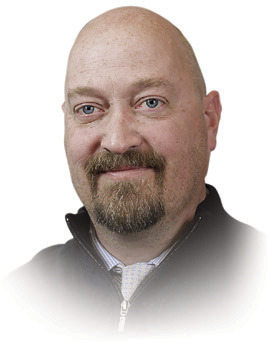I’m not sure why I remember this, but when I was a youngster in grade school, we had a healthcare person come to the school to talk about, well, our health. One of the topics was bloody noses, and the class was asked, “When is the worst time to get a bloody nose.
I said, “In church.” I was serious, but my classmates thought I was making a joke. I never gave the real answer a thought. No, it’s not in church, although that would suck. The answer was while we are sleeping, to which I replied, “Yah, I sleep in church!” Now that’s funny.
I suppose that makes sense though — you wouldn’t even know it was bleeding, and imagine waking up with blood all over your pillow. Scary.
I’ve never suffered a bloody nose while asleep, but the reason I bring this up is because I suffer from obstructive sleep apnea. Some of you know that sleep apnea has some pretty serious symptoms including loud snoring on one end of the “danger spectrum” and frequent pauses in breathing, which is a tad more serious.
Yes, you actually stop breathing over and over again throughout the night.
If you know all this, you also know one of the ways of dealing with sleep apnea is a CPAP machine, which is designed to deliver a constant stream of air pressure through a mask over your nose and mouth to keep your upper airway open while you’re snoozing.
I have a CPAP that I use, sometimes. It’s not much fun, which is why I often remind myself to forget to put it on at bedtime. My older model CPAP is bulky and uncomfortable. The newer ones are smaller and probably more userfriendly. This kind of therapy is effective if you use it consistently, which is my problem, and I’ve always wondered if there are other options (no, not surgery, don’t even go there).
Sleep apnea is just one of my sleep disorders, as I also suffer from restless leg syndrome — painful and painless at the same time — and insomnia, which makes me wonder why I even try to sleep at all.
Any other option? Glad you asked. I got an email last week from the Minnesota Office of Cannabis Management (OCM). The headline: Patients finding relief from obstructive sleep apnea in largest study ever involving medical cannabis treatment.
Suddenly, the clouds parted and birds began to sing. You mean, all I have to do in order to sleep better and actually wake up feeling refreshed is smoke pot?
Sign me up. The email said patients with obstructive sleep apnea enrolled in Minnesota’s medical cannabis program are finding a noticeable improvement in their quality of sleep within four months of receiving medical cannabis, according to a new study conducted by researchers at the OCM.
The study, the largest on record involving obstructive sleep apnea and medical cannabis patients, analyzed data from 3,102 firsttime patients enrolled in the medical cannabis program with obstructive sleep apnea between Aug. 1, 2018, and July 31, 2023. The new report draws on data from patient enrollment, medical cannabis purchases, symptom and side-effect ratings at the time of each purchase, and patient survey results to describe the experiences of patients who are certified as having OSA by their health care practitioner.
According to the report, among the 2,749 patients with moderate to severe disturbed sleep, nearly 4 in 10 (39.4%) were able to achieve a 30% reduction of symptoms and maintain it for at least four months. For patients with moderate to severe fatigue, one-third (33.5%) were able to achieve a 30% reduction in symptoms and maintain it for at least four months.
Again, sign me up. What can’t cannabis do? In all seriousness, we’re talking about medical cannabis here, used for health reasons, not recreation. But it’s interesting just how many ills cannabis can apparently cure. Of course, it’s also known as a “gateway” drug, and I wouldn’t want to walk through that door.




